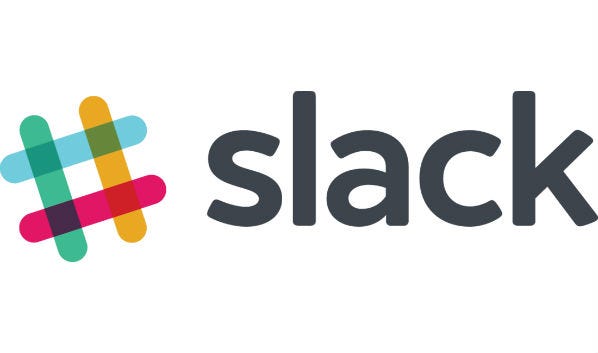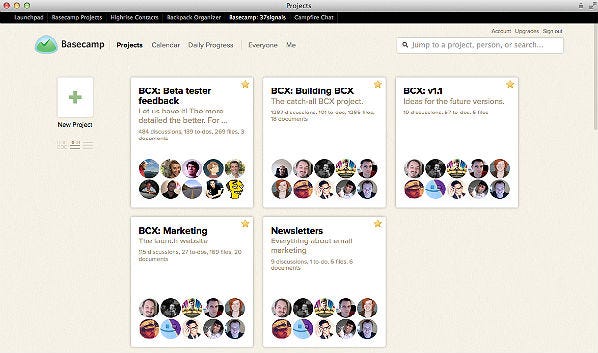Since time is money, and money can be tight for smaller companies, it’s no wonder that productivity is such a hot topic for SMBs.
November 14, 2016
SMBs, Follow These Steps to Increase Productivity
By Angela Leavitt
Since time is money, and money can be tight for smaller companies, it’s no wonder that productivity is such a hot topic for SMBs. As a small-business owner myself, productivity is something I’m constantly reading about and working to improve, especially since it doesn’t come naturally to me.
I blame this on being a “creative type,” a Gemini, and a chai latte addict. It’s a dangerous combo.
My team, however, is frequently complimented on its ability to manage projects and hit deadlines in a simple, effective way. Also, many people are shocked when they find out the size of our team (five full-time, plus a few dozen contractors). Since we work with 25-35 clients at a given time, we have to make every second count.
[What follows] are some ways we do that, and maximize our productivity. I’ve broken this out into two sections: practices (the first half of the slides) and tools (the second half).
Angela Leavitt is CEO of Mojo Marketing. Follow her on Twitter.
Keys to SMB Productivity: The Daily Scrum

Kicking off our productivity practices list …
When a key employee left the company, I was concerned about maintaining the high level of support and communication our clients had come to expect. As a result, we implemented a daily status update meeting at 9:30 a.m.
Why 9:30 a.m.? It gives my team time to check their emails and gather their questions, and then the rest of the day to implement results from the meeting.
Benefits of the Daily Scrum:
Greater efficiency. Since our projects typically touch multiple employees, all questions get answered simultaneously. This eliminates lots of back and forth over email.
Effortless cross-training. Since we gather our entire team for this meeting, everyone learns what’s happening across every project and client. This helps when someone calls in sick or takes vacation — there are other people who are up to speed on the project.
Team-building. Besides reviewing projects, this is our daily check-in with each other. Much like sitting down to family dinner, it’s nice to have a designated time and place to gather as a team. (And share chocolates. We always have chocolates.)
Bonus tip: We keep these meetings to 30 minutes, and I’ve even heard of some companies doing them while standing to ensure they stay short and sweet.
Keys to SMB Productivity: Time Blocking

Time-management experts say you can lose up to 25 minutes of productivity each time you switch tasks. In the SMB environment, most people are wearing multiple hats, and while it may seem counterintuitive, maintaining focus on one activity at a time may be the most important factor to maintaining peak productivity.
The solution is time blocking — designating certain periods of time to only ONE activity. This means you close ALL other tabs (gasp!) and do not allow for interruptions.
I have five main “hats” that I wear in my company, and I block out my time accordingly. For example, I block off certain time periods for business-development activities, financial reviews, and two hours on Monday afternoons – a typically slower time for us – to write new content.
Which is what I’m doing right now! See, it works!
The benefits of time blocking? Get more done, in less time, with more focus and less stress.
Keys to SMB Productivity: Automation

If the mantra for sales is “Always Be Closing,” then the mantra for SMBs should be “Always Be Automating.” If you’re going to be completing any task more than a handful of times, it’s worth investing the time and resources into automating the task.
Here are some examples and ideas:
Ask your staff what emails they frequently send, and create templates they can use and easily update.
Check out sites like IFTTT and Zapier to see how you can make multiple platforms talk to each other. More on these in the slides that follow.
Hold a regular Process Improvement meeting and work on automating or improving one company process at a time.
It may seem tedious to put time into automation, especially when you’re just starting out. But if done well, automating routine tasks will reward you thousands of times over in future time savings.
Keys to SMB Productivity: Lose the Task List — Go Full Calendar

I know this one is controversial, but here goes. I’m not a list person. I know they are necessary in certain contexts, but long task lists stress me out and do not inspire me to get work done.
The alternative? Translate the task list onto the calendar. That way everything gets assigned a set time and place and I make sure everything gets done on time.
Disclaimer: There are very heated battles online over the task list vs. calendar method, and I realize this is a personal choice. Here are a few reasons why the calendar method works for me:
My calendar is harder to ignore than my list. I live by my calendar.
A long list feels overwhelming and unmanageable. A full calendar doesn’t.
I have a greater sense of control over my calendar.
Not sure if this practice is for you? Try it for a few days. When a new item comes up, decide when you’ll do it and put it on your calendar immediately instead of adding it to your to-do list. You’ll know right away if it’s a better method for you.
Keys to SMB Productivity: Slack

Kicking off our productivity tools list …
For those unfamiliar with Slack, think of it as instant messaging sorted by topics or categories. This is a great tool for getting quick feedback or answers that otherwise may get lost in email and for aggregating content by topic.
For example, we create a lot of memes for our clients. In the past, brainstorming creative meme ideas on the spot often proved challenging. Lots of blank stares, head-scratching and furious Google image searching ensued.
The solution? A Slack channel called #memeideas. We use it as a catch-all for inspiration, whenever and wherever it may strike. When someone has a clever thought or comes across something we could use for inspiration, into the Slack channel it goes.
Now when we have our monthly brainstorming session, we simply pull up the channel to review the feed. As a result, we get better ideas, more quickly.
Keys to SMB Productivity: Basecamp

Basecamp is a project management tool that houses practically our entire business. Part database, part collaboration and part communication, Basecamp helps us to run things smoothly among ourselves, our contractors and our clients. Everything is kept in one place so nothing gets lost in email.
Here are just a few of the ways we use Basecamp:
Assigning tasks to clients with due dates. “Please send us your high-resolution logo.” Basecamp will remind the client via email when the deadline is approaching or has passed.
Communicating with employees and contractors on assignments. Since all files and documents are in one place, we can easily link the recipients of assignments to all the resources they need. No more emailing large files.
Collaborating on writing projects. Using “Text Documents,” multiple writers can contribute or provide feedback on content, and Basecamp automatically saves each new version so you can easily browse the history.
The best way to summarize its effectiveness is: everything in one place, organized cleanly so you can get more done and worry less.
Keys to SMB Productivity: Platform Integrations

In the age of APIs and open-source formatting, most platforms can “talk to” other platforms. This is a life saver because it reduces the need for duplicating work and supercharges your efficiency.
Here are a few that we use:
EverHour: This is a time-tracking tool that integrates with Basecamp and measures the time spent on each task. This helps immensely with the clients we bill hourly and productivity reports.
WorkStack: This also integrates with Basecamp and helps with assigning tasks and managing workloads.
IFTTT: Standing for “If This, Then That,” you can create “recipes” to automate simple processes between social, email, data storage and more. For example, you can create a rule that if you post a blog, it will auto-post to your Twitter or Facebook. Or if you post a photo to Instagram, it will also save to Dropbox.
Zapier: This is a more sophisticated version of IFTTT where you can create “zaps” between multiple platforms. We have zaps that send information back and forth from our CRM and marketing-automation tools, our CRM and Basecamp, and so on.
There are new recipes, zaps and integrations being created each day, so check in regularly to see what’s new. You may be surprised how much time you can save.
Keys to SMB Productivity: How Do You Stay Productive?

What are your favorite productivity tools and tricks? I’d love to hear about your experiences in the comments below. Please share!
SMBs, Follow These Steps to Increase Productivity
Please click here for more Channel Partners galleries.
Read more about:
AgentsAbout the Author(s)
You May Also Like


